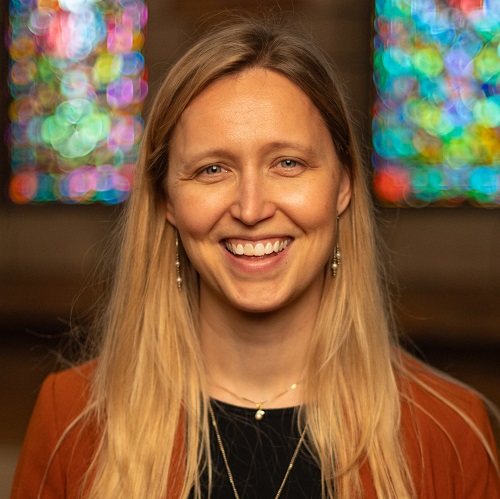The Word became flesh and dwelt among us.
The Word did not become flesh and dwell behind a pulpit.
I’ve been thinking a lot lately about the use of the physical in preaching. In one of my senior classes at seminary, a panel of pastors came and talked to us about what life is really like in the parish. During that time, one pastor mentioned not wanting the pastor’s body to detract from the gospel. I remember thinking, “Detract?” Because really, how can you separate the gospel message from the voice — and body — that speaks it? (We saw how well that worked for the Great and Powerful Oz.)
We believe strongly as preachers that the Word is meant to be heard — not just read or dreamed about or reflected upon. And if that Word is going to be spoken, if it’s going to become verbally incarnate in someone’s life, it needs a body to carry it.
So why, I’ve been wondering, do we take such care to hide our bodies during preaching? Oh, don’t get me wrong, I understand and appreciate the symbolism of the alb and stole (though when I get animated during a sermon, I always wonder if I look like a crazed bat or a batty grandma). I also know and appreciate the symbolism of the pulpit, the importance it places on the spoken and preached gospel, not to mention the practicality of the pulpit in a small country church with no sound system and flat pews.
But when I’m up there, looking out (or down) on the people in the congregation, I can’t help but feel like a lecturing pedagogue (and you know how easy it is to tune out a lecture). You’ve all been there; you know that feeling, that exact moment in a sermon when for some reason the momentum lags or the idea drags, and you think, I’m losing them.
I’m not advocating throwing away the alb or never entering the pulpit again (i.e., starting a church riot); these are symbolic things and spaces that have great meaning in our tradition. But the power of preaching — and being preached to — can be amplified by the intentional use of these and other physical aspects of worship, including our bodies. We actually do this already; we are quick to ask kids to use their bodies in the children’s sermon, since we know that when learning, the more you use your body, the more likely you are to remember, internalize, give meaning to something. That’s probably one of the reasons we sometimes hear, “I got more out of the children’s sermon than the regular sermon today!”
So I wonder what people might say if we use some of our kid tactics in our regular sermons? Preaching about Zaccheus? Use the pulpit — or even the balcony, if you’ve got one. Preaching about Jesus dwelling among us? Use that glorious aisle for something more than a bridal promenade. Preaching about putting on Christ? Start the sermon un-albed and use it as an illustration of being clothed with Christ. Or, if you already do all these things, and your church is more informal, put on an alb and stole, get up in that pulpit, and preach about Christ’s yoke that binds us together or the importance of the Word in our lives.
Preaching isn’t about creating the best performance or finding a quirky hook that will draw people in; it’s about setting people free from the power of sin, free to live a life of abundance, of joy, of love and childlike service to God and neighbor. And they will do all that using the magnificent, broken bodies with which God gifted them. Let your sermon reflect that reality, and use that magnificent, broken body with which God gifted you to preach.
